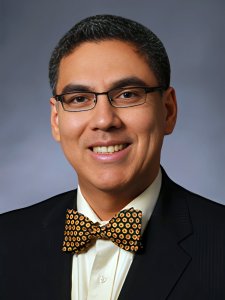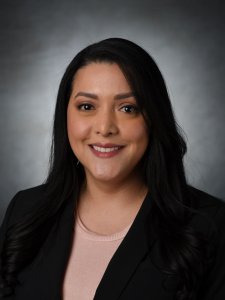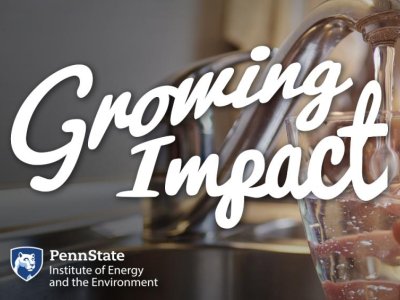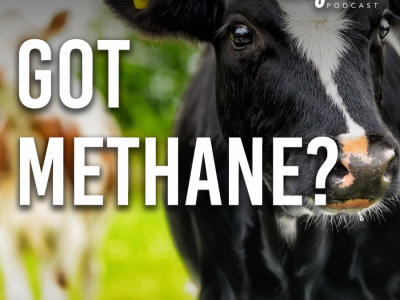30-minute listen/watch | 22-minute read | 1-minute teaser
For decades, PFAS (per- and polyfluoroalkyl substances) have been a staple in products from detergents to cosmetics, making items more durable and resistant to water and stains. However, the creation and use of these "forever chemicals" is not without consequences. They persist in the environment and are now ubiquitous, even in our drinking water. Emerging evidence links PFAS exposure to significant health risks, prompting a team of researchers to evaluate affordable filtration technology. The team's project aims to safeguard drinking water, especially in communities reliant on well water, by effectively removing PFAS, thus mitigating their impact on public health.
Transcript
Heather Preisendanz
PFAS, it's been found in air, in soil, in plant material, in food, in a wide range of products and packages that we use in our everyday lives. And so it's just a very ubiquitous range of compounds that we're just beginning to understand.
Host
Welcome to Growing Impact, a podcast by the Institute of Energy and the Environment at Penn State. Each month, Growing Impact explores the projects of Penn State researchers who are solving some of the world's most challenging energy and environmental issues. Each project has been funded through a seed grant program that's facilitated through IEE. I'm your host, Kevin Sliman.
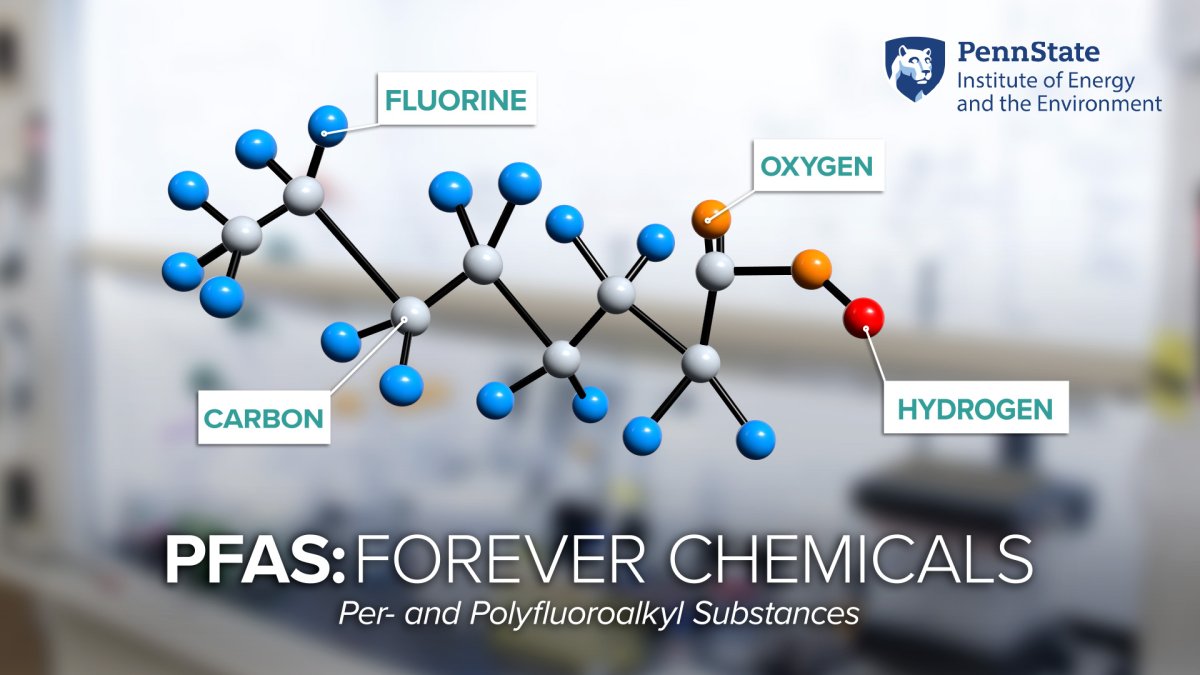
The acronym PFAS, spelled P-F-A-S, stands for per- and polyfluoroalkyl substances. This is a group of chemicals that's used to make coatings and products that resist heat, oil, stains, and water. Since the mid 20th century, manufacturers have been creating and using thousands of PFAS chemicals which are found in numerous consumer, commercial, and industrial products. Its blessing is also its curse. PFAS’s powerful chemical bonds result in an extremely durable product.
However, that also means it resists environmental and metabolic deterioration. Due to this fact, PFAS has been found virtually everywhere: in the water, the air, in plants, animals, and even humans. The concern is that research has shown that exposure to some PFAS may be linked to harmful health effects, and these impacts are often heightened in disadvantaged communities. In response, a research team is evaluating methods to remove this hazard from drinking water and educating the public about these options.
Host
Thank you for coming to Growing Impact and speaking with me. I'm going to have everyone go around and please introduce themselves.
Heather Preisendanz
My name's Heather Preisendanz. I'm an associate professor in the Department of Agricultural and Biological Engineering (ABE). I also have a role as the associate director of research with the College of Ag Sciences’ SAFES Institute. So this is the Institute for Sustainable Agricultural, Food, and Environmental Science. So “SAFES” for short, since that's a big mouthful. And I'm also in the natural resources engineering area within the ABE department. I teach water quality related classes and conduct research in that space.
Juliana Vasco-Correa
Hey, I'm Juliana Vasco-Correa. I'm an assistant professor of agricultural and biological engineering, and I do a lot of research on what we call systems analysis, or process systems engineering, that is using mathematical models to understand and processes in the fields of agricultural and biological engineering. And many of those models are and technical analysis or lifecycle assessment models. But we study how to make these proposals, these new emerging technologies, first of all, and make sure that they're really better for the environment, which is what we usually expect.
Faith Kibuye
My name is Faith Kibuye. I'm an extension specialist with the Ecosystem Science and Management Department. As part of extension, one of, some of my roles include addressing some of the water quality needs that we receive as part of the extension. Alongside that also conducting research in my research interests is in water and wastewater treatment, along with also with understanding, feed and transport of emerging contaminants.
Enrique Gomez
I'm Enrique Gomez. I'm a professor of chemical engineering and materials science engineering, and I'm also the interim associate dean for equity and inclusion in the College of Engineering. My work is focused on connecting the molecular structure with functional properties of various polymers and soft materials to promote a sustainable society. So, for example, we work on developing membranes for water purification, such as desalination.
Stephanie Butler Velegol
My name is Stephanie Velegol. I'm a teaching professor here in chemical engineering and I've taught a lot of courses on water and wastewater treatment. And in addition to that, I've done some work on using the seeds of the Moringa oleifera tree to create a sustainable water treatment technology for the developing world.
Host
PFAS is a topic that's, it's showing up more and more. We're seeing more news about it. It's showing up in the media. Can we talk about PFAS, for especially for those who may not know what it is? Could we describe first, can we define it? Can we say what it is? And then second, can we talk about where is it showing up and why is it showing up?
Heather Preisendanz
PFAS, so this stands for per- and polyfluoroalkyl substances. This is basically a chain of carbon compounds that are fluorinated, and then there is a wide range of specific compounds that are under this broad PFAS category. So some have said as many as 12,000 different compounds that it can be considered PFAS. And the way that they're mainly differentiated is either as long- or short-chain compounds. And so that just depends on the number of carbon atoms that make up the structure. And then what also differentiates them can be the functional groups that they have on their tails. And so this helps them have different properties when they're being used in a variety of products.
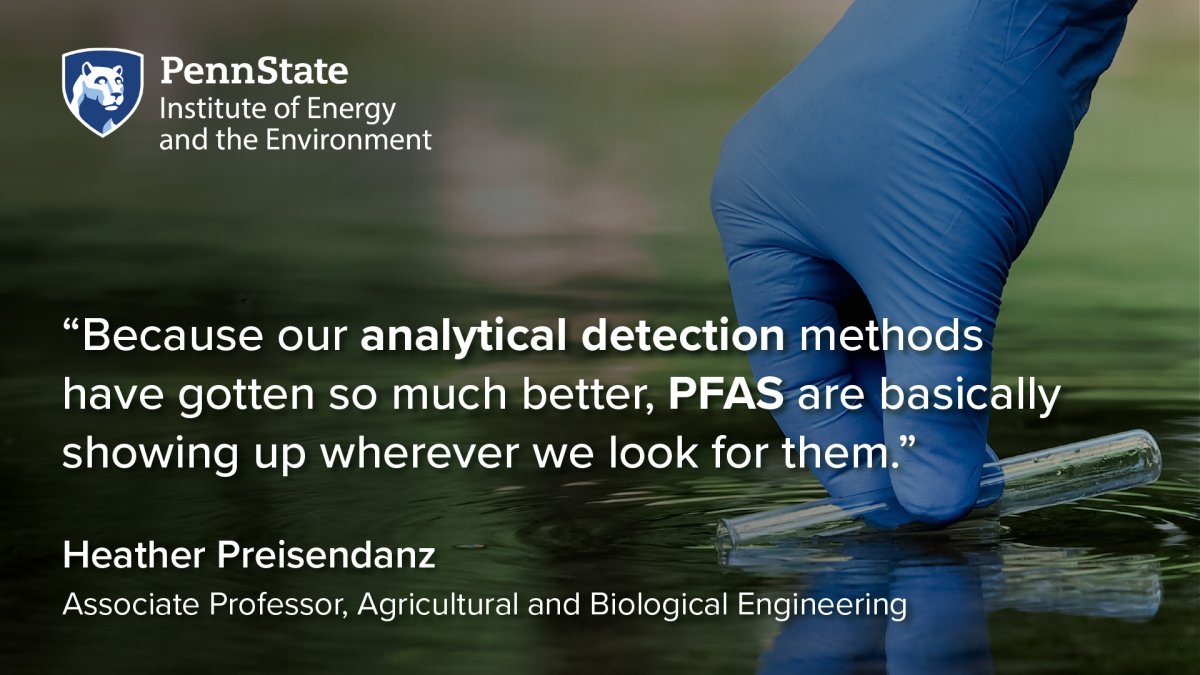
And I'll say maybe just offer where they're commonly showing up, because our analytical detection methods have gotten so much better, they're basically showing up wherever we look for them. And so this primarily is in water and wastewater, which is where there's a lot of heightened interest right now. But it's been found in air, in soil, in plant material, in food, in a wide range of products and packages that we use in our everyday lives. And so it's just a very ubiquitous range of compounds that we're just beginning to understand. But they're not a new category of contaminant. So they've been produced since like the 1930s or ’40s and have just sort of been getting attention more recently due to our analytical abilities to detect them at lower and lower concentrations.
Host
You said they've been they've been around since the early to mid 20th century. Can you provide some examples?
Faith Kibuye
Like Heather was mentioning, they have been used for a relatively long, long time. This is because of their unique properties for water repelling, oil repelling, and some of them also have some time stability. Because of those properties, they have been implemented as some key ingredients in products that are used in, for example, waterproof apparatus that we use on a day-to-day basis. We also have some types of people that are also using some of those sticks nonstick or stick resistant cooking ware although stain proofing, some surfactants may contain some PFAS and then in some cases this also was commonly used in firefighting foam. Yes. There are also some recent articles that are showing detection in some of the cosmetic products that are used in day-to-day basis. So they in short, they are very widely used in a wide range of consumer products and also in some other sectors, like in our transportation industry, medical world as well. So because of these wide use, it also in some way explains why PFAS are vastly detected in environmental sectors and in tissues, plants and animals and also in some cases in human serum.
Host
So it's been created, you know, it's been around for a hundred years, at least in creation for 100 years. So why is it now that we're saying, hey, this is dangerous or at least something that we need to be mindful of. Where, how did that occur?
Faith Kibuye
I think there's been a few studies that have been linking that occurrence to PFAS to some environmental but also human health effects. Because of that, that has that has definitely caught the attention of the public and public media and also regulatory agencies. So for example, the United States Environmental Protection Agency initially came up with some health advisories for PFAS drinking water. And then last year there was some proposed drinking water, maximum contaminant levels that were proposed for drinking water as well. So I think if those things happening in parallel, regulatory actions for PFAS or so studies that are linking it to human and environmental health effects and public media, so those can often stimulate increased interest on this topic, I think.
Stephanie Butler Velegol
Yeah, and I can just jump in also, as a chemical engineer. So there is a lot of attention drawn to this issue also with DuPont. There was a big law lawsuit that went through and there's actually two movies that might be of interest. One is called Dark Waters, and one is called The Devil We Know. They both tell the same story from different sides. And so I think that whole, not just the movies, but the whole case itself with DuPont probably also drew a lot of attention. That was a number of years ago, but that was sort of how we started hearing a little bit more about it. And there was a lot of, there was some research. And obviously the big lawsuit that came out of that that drew some attention to this as well.
Enrique Gomez
Yeah, I believe that PFAS really started widespread manufacture in the 1950s. It was in the 1970s or ’80s that they found a substantial amount of PFAS in the blood of workers that had been manufacturing PFAS. And then folks became concerned about what could that be causing in terms of adverse health effects.
It wasn't probably really until the 2000s that folks started study that detailed with various animal assays and things like that, and then they began to find that there's potential carcinogenic, mutagenic, all sorts of potential negative health effects, although the details of how and what concentrations are really relevant to people is still controversial and folks are still arguing over how much could be acceptable, how much would be very toxic to humans, or have long term chronic effects on humans. Is that fair, Faith and Heather?
Heather Preisendanz
Yeah, that's, especially toxic, talking to the toxicologists, that's my understanding as well. There's some sort of suspected effects. One of them is kidney cancer, that's one that I hear the most discussed. But, but yeah, it seems like that and reduced weights in infants that are born to mothers that have been exposed to higher levels of PFAS, as well as reduced immune responses. So that became a concern, especially when we started all getting the COVID vaccine. So if there were, you know, reduced immune responses to that vaccine, that was a problem, if that was linked to PFAS. So those are some of the more, I guess, more recent concerns that have brought this back into media attention as well.
Host
One way to protect ourselves is to remove PFAS from water. Can we discuss the current methods of doing so? And then can we discuss the proposed treatment technologies that your team is working on?
Enrique Gomez
So in general, the three most common methods to try to remove PFAS right now are using things like activated carbon; using ion exchange resins that you might use, for example, for water softeners; and using pressure-assisted, pressure-based filtration, so things like reverse osmosis waterfiltration, which is often used for things like desalination. Those three methods have been shown to work to varying degrees. The cost can be high depending on the details of a specific application, and it's not obvious necessarily how scalable those approaches can be or how accessible that is for folks in disadvantaged communities or perhaps in rural areas.
So one of the things that this group is very interested in doing and this project is really focused around is evaluating different technologies and their potential to be able to address PFAS removal. So everything from activated carbon, so those are things like Brita filters, PUR filters, you know, the sort of thing that you might buy the grocery store or Lowe's or something like that, to be able to fit on your sink or to fit as a water pitcher, to include things like ion exchange resins, as well as to include things like pressure filtration, but more that might be accessible to homeowners. Right? So at the end user level, as opposed to necessarily so much at the industrial or water treatment plant scale. And our hope is to be able to demonstrate both in terms of looking at the science and analytical, measuring analytically, the concentrations of PFAS removal, to be able to look at what is the techno-economic model or the techno-economics associated with each of these particular technologies, especially when you look at it in terms of its ability to remove these compounds. So that you might be able to say hopefully to a rural homeowner or someone in the community that doesn't necessarily have access to PFAS-free water, well, this is the most cost-effective solution for this level, basically, of reduction and PFAS elimination of PFAS.
Juliana Vasco-Correa
The technologies that we're exploring are some studies have been done on the cost of removing and extracting PFAS at the wastewater treatment community level, and it is quite expensive. What it looks like right now, it's like it costs thousands of dollars to make a pound of PFAS, but it costs millions to destroy completely. But what we really need for rural communities where they don't have access to water that has gone through these big water treatment plants, it has to be reverse osmosis or other technologies like that and the PFAS-free water is to provide a good technology that they will be able to use in their household. And that's what we're trying to develop in understanding the cost of those technologies for the end user is quite important. And what we're thinking is more on the removal of our then. We will have some sort of technology we’re expecting something like a filter, probably, similar to one of those pitcher filters or under the sink filters that they could use in their household that could be economically comparable to filters that they buy already to eliminate contaminates in their water, and that they could just use that. And we are considering how often they will have to replace them and how effective they will be for the concentrations of PFAS. that they have in this rural community.
Host
So the affordability is certainly a component that you want to be mindful of in making sure it's accessible to people. So what sorts of communities and I heard the word “rural” thrown around a couple of times, at least. What sorts of communities or maybe in what sorts of instances will this sort of technology be helpful? In other words, what communities would this maybe be most helpful for? I can think of one specifically and I think of, well water is that maybe a community that would benefit from something like this.
Faith Kibuye
Yeah. So in some in some sometimes, I don't know. There's often times a common misconception that, well water is pristine and, you know, free of pollution, but we're also in contrary a lot of wells in Pennsylvania, for instance, that sometimes contaminated with some components from their septic systems and other sources nearby. So well owners sometimes often turn to some point-of-use or point-of-entry water treatment systems to try and make this water to safety levels, to bring contaminants below, to meet safety requirements. And so if in the long run technology ends to a point where it can be implemented as a point-of-use or a point-of-entry treatment, definitely I think there can be some opportunity there for people depending on wells to use this, to treat their water in a cost-effective manner.
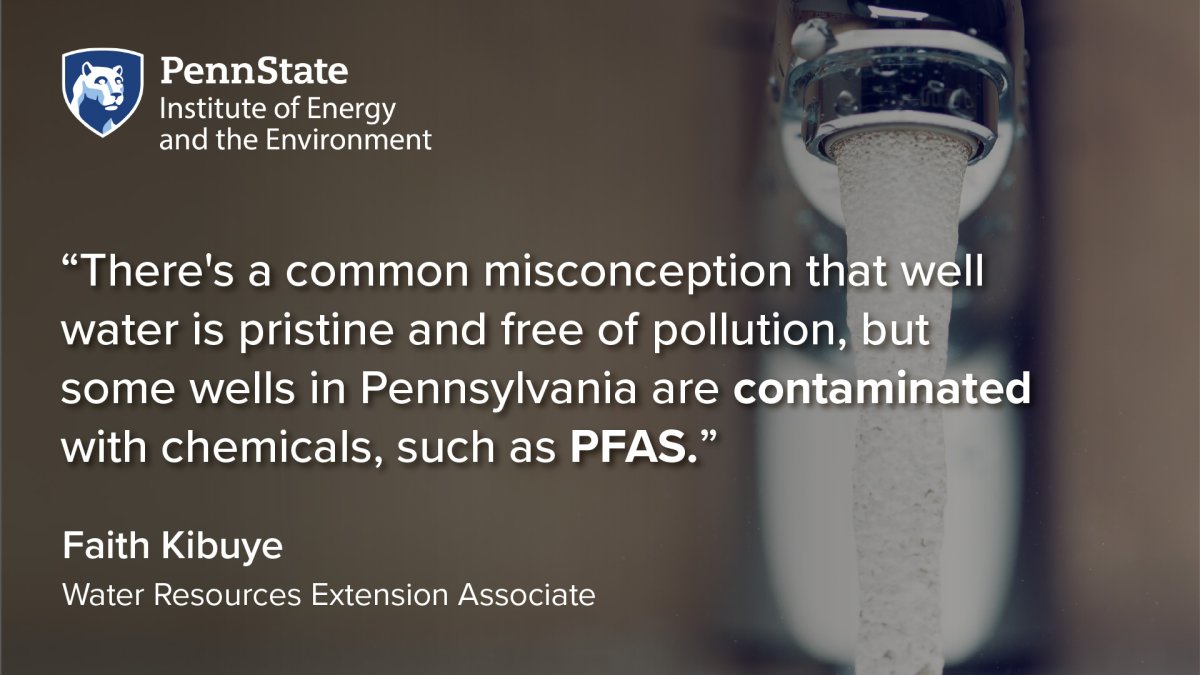
Heather Preisendanz
Maybe if this is at all helpful to add a little bit of context. So there's approximately a million private wells across the state of Pennsylvania and they serve approximately 3 million or 3.5 million people across the state, and that's roughly 25% of the population. So the remainder of that population is on public water supply. So the water that they get from municipal drinking water treatment plants would need to meet the state or the federal level drinking water standards. And so although there's a cost, you know, for getting the water quality down to those standards for PFAS and, you know, every other contaminant that has to follow regulatory standards, you know, people who are on public water supplies can be assured that their water would meet those standards.
However, people who are on private wells really have no way of knowing, like there's no one else except that homeowner watching the water quality of their of what their family is consuming. And I guess one of the concerns, in addition to the treatment costs, is actually just the cost to know what you have in your water to begin with. This is an expensive analysis. We're talking hundreds of dollars. And just to have one data point from a homeowner perspective on what levels of PFAS they have, and there's no guarantee that that number doesn't change over time. And so I think, you know, when homeowners are thinking about this problem, sort of, you know, at a larger scale, this feels very daunting. If it's going to cost that much money to even know what's in your water to begin with, then you have to potentially, if your numbers are higher than the drinking water standards, you know, you would hope that these homeowners would want to adopt something that they're at their point-of-use or point-of-entry so that they can bring those levels down. And so I think anywhere where we can provide some sort of cost saving, would help any private homeowner with a private well, and, you know, most of the people who are on private wells are in rural communities. And so it's their vulnerability that we're most concerned about here.
Host
So Heather, you mentioned how expensive the testing can be. What is the outlook on testing? Does anyone know? Is it still like it's there's no it's going to be expensive for a long time or no, it's actually decreasing or is it does anyone know that trend or is it...?
Heather Preisendanz
I haven't seen it go down, I’ve seen it go up. Because as people are getting concerned, the demand for the tests and access to the labs is going up and the labs are having trouble keeping up with the demand. And so also, as the methodology changes, there's been a number of changes in the analytical methodology for looking for these contaminants. So original methods maybe looked for 18 or so of them. Now there are some methods that are looking for 40, in some cases 70-something. And so just the number of compounds that are being included in these tests is also going up. So I'm not quite sure I know what it would take to get those numbers down. I know that from a research perspective, we've been writing grants that have provided free analysis to homeowners that we recruit as part of grants that Faith and I have. And so we've been able to provide free tests to people that we've recruited through our EPA and other internal sources of funding, those grants that we have. And that actually led to data from two earlier rounds of sampling that we did across the state of people who are on private wells, sort of set the stage for what we want to look at in terms of input into the technologies that we're testing as part of this grant, because we actually have data from about 100 homeowners across the state.
A little bit more than 50% of those homeowners did have detectable levels of PFAS, but most of them did not have levels that exceeded the EPA's proposed standards. And I think only one homeowner had levels that exceeded the Pennsylvania DEP standards. So mostly what we're seeing is relatively low, but widespread occurrence, of these PFAS compounds. And so that's, I guess, what we're trying to look at. It's actually easier many times to remove compounds that have high concentrations. Sometimes it's harder to do it for the compounds that have low concentrations. And so that's one of the questions we'll be looking at with this project is what's going to perform well for really actually the numbers that homeowners that we've been working with so far is seeing, recognizing that there are going to be homeowners that do have higher concentrations, as well, and how to how to best help them.
Host
One of the goals of the project is to identify technological solutions for disadvantaged communities. Can we discuss why disadvantaged communities are more likely to be affected by PFAS?
Heather Preisendanz
When you think about the sources of these compounds are so, you know, Faith, I think, mentioned these aqueous firefighting foams, that’s a big source of the high concentrations. If you live close to an airport, if you live close to a military base, if you live close to a firefighting training site, these are all going to be the big sources of PFAS, and then industrial sources as well. And so these tend to be in maybe more urban communities or disadvantaged communities. And so their exposure to these compounds is likely higher and they may not have their municipality or their I don't know, their drinking water treatment plant might not have the funds to implement technologies as easily or as proactively as other communities that have more funding available. So the bipartisan infrastructure bill is actually one way that some smaller communities, disadvantaged communities, can get access to improving their technologies in their, at the drinking water treatment plant scale. But again, that's not going to change what happens in these private wells. So I think if you live near one of these big sources and are on a private well, that's who we would be most concerned about.
Stephanie Butler Velegol
I think one of the things is, again, focusing on people who are on these well systems. And if they are not connected to, like Heather pointed out before, that if they're connected to a public system that's going to be monitored, but the well systems are not. And so that tends to be, although I don't have the numbers on that, that tends to be some of our lower income folks who are on well water. And so I think just the fact that it that the well water is not being monitored is really the concern here. If you are on public systems, hopefully they will be able to monitor that and will need to implement things to reduce those concentrations. But I think because we're dealing with people, we're concerned about people om well water that don't monitor that then leads to people who have to find their own water treatment essentially, right? And so when that's not a shared resource like it would be for a public water facility where we're all paying into that, but now an individual has to fund their own treatment. Just that alone, it makes it more economically disadvantaged to have to do that.

Host
You're working with Penn State Extension on this project. I'm not sure everyone knows about Extension. So first, can we talk a little bit about Extension and how they assist educating Pennsylvanians and how it's being utilized in this project?
Faith Kibuye
Yeah. So Penn State is a Land Grant University and as an institution, therefore, it is our responsibility to provide research and science-based education programs and resources for the residents of Pennsylvania. So this is achieved through Extension. Extension is part of the College of Agricultural Sciences, and the team consists of Extension educators, associates, and faculty that bring in together a wide range of expertise to generate education programs, products, and services that meet the needs of Pennsylvania residents. And so we cover a wide range of topics. Some of the units with Penn State Extension are agronomy and natural resources, so this is where there also, this is where the water and water quality topics fall.
But there are other units as well, such as other areas such as 4H and youth development, animal systems, horticulture, food safety and quality, energy, business and community vitality. So there's actually a wide range of resources that someone can find through Penn State Extension. And we work together in some cases with communities and Pennsylvania residents to even identify what the needs are if that is not what is not clearly available. And also to work with them to provide those solutions to them and test it over time.
So for this project in particular, as opposed to other projects where we work with homeowners to test their water samples for this project, mostly just bringing that aspect perspective of extension. As of right now, as the project evolves, we can work with Penn State Extension and other resources to join with other industry partners if necessary. But I think that is something that might come a lot later necessarily, beyond the seed grant level.
Host
If these solutions prove to be effective, what do you envision as next steps?
Enrique Gomez
Well, one of the things that we certainly want to do, first of all, is to disseminate the knowledge that we've gained, right? To be able to provide strategies, cost effective strategies, to be able to remove PFAS from folks that are homeowners, well owners, and eventually to extend that work to municipalities and larger water treatment facilities.
And so the other thing, though, that can build from that particular work is to identify specific technologies that maybe show substantial promise for cost basis to then continue to develop those technologies further, whether it be so, for example, renovations to chemistries of the removal material, so whether that be modifying polymer membranes to maybe be able to act at higher flux, but still removing a lot of PFAS, or changing the specific ions that might interact with PFAS to be able to remove them in ion exchange columns and so on. And from that identify potential routes for future research directions and future improvements in technologies to both lower costs and enhance removal.

Host
What does success look like at the end of the project? Whether you want to talk about it project-wide or maybe even as from your perspective, I'd be glad to hear from everyone actually.
Heather Preisendanz
So I think one of the main things is that we demonstrate the effectiveness of each of these technologies to remove PFAS. So whatever that looks like for the range of compounds that we're testing, we just want to better understand their potential. So each of the potential medias that we're testing, as well as the lower energy sort of reverse osmosis system that Enrique has described, we just want to know what their potential is to perform at the at the household level. Then, you know, we want to share that information with homeowners who may have heightened risk or just so Faith has something that she can that she can provide to homeowners when they ask her questions about what they can implement. Because I know she's getting questions like that. And a lot of Extension folks are getting questions related to PFAS we just don't have good answers for.
So I'll measure success if we have, you know, numbers at the end that allow us to characterize effectiveness and then, you know, the results of the TEA that help us understand the implications to the homeowners of what the cost might be to adopt one of these technologies and that asset and Faith has fact sheets and other information she can share back to the homeowners that she works with and with the extension, with the stakeholders that are that are reaching out to her. So those three main things, and I'll let others build from there.
Enrique Gomez
Yep, we hope to identify cost-effective solutions for PFAS removal and to identify potential new directions for research to continue to develop these technologies to both reduce costs and increase removal.
Stephanie Butler Velegol
Yeah, I’ll jump in, too. I agree with what they're saying. I think there's some science that will be discovered here as well. And so because as Heather mentioned, there's so many PFAS molecules out there, we're really trying to understand some of the differences of the way that they behave with different treatment technologies. And so that's the science part. And then we use that science in the engineering also that we're doing in building these and trying out different things about filters, flow rates, things like that to determine what's the best way to use these treatment technologies. And then that science and engineering go together to create a system of knowledge that can then be pushed forward to the consumer of the products, as well as other scientists and engineers that want to continue that work forward.
Juliana Vasco-Correa
Following up on that, I think inthat part of the system of knowledge, is it's what I believe is the key as well, and to be able to take this to the next level. So from the power of that technical model, we are able to connect with the science that the existing one, the developed form with the problems that we have to kind of identify the most promising technologies, but also maybe what are the bottlenecks to take this technology to the next level and make it feasible to implement that. And then maybe that helps us identify what else do we need to work on that we are not right now because we haven't even identified some problems that could create additional cost in the whole and supply chain solutions.

Faith Kibuye
In general PFAS brings out a sense of fear, because of a lot of unknowns on this topic. So to broaden the mission of Penn State Extension which is to provide science-based education to Pennsylvania residents and to local communities. So getting this information that we will be generating from this project, the removal of PFAS, the performance of different treatment methods that we will be investigating for removing PFAS and also providing that economic side of it is very essential when we are communicating to the public and at the end of the project.
Enrique Gomez
One of the very exciting aspects of this project is how we've brought people together, with very different backgrounds, the work of very different aspects of research and technology and education. And that's a really big plus for the team in terms of being able to bring different perspectives and put them together to solve this very important problem.
Host
Well said. Thank you, everybody. I really appreciate your time. Have a great day.
Heather Preisendanz
Thank you for doing this. And good to see everyone.
Stephanie Butler Velegol
Bye-Bye
Faith Kibuye
Thank you.
Host
This has been season four Episode seven of Growing Impact. Thanks again to Heather Preisendanz, Enrique Gomez, Juliana Vasco-Correa, Stephanie Velegol, and Faith Kibuye for speaking with me about their research. To watch a video version of this episode and to learn more about the research team, visit iee.psu.edu/podcast. Once you're there, you'll find previous episodes, transcripts, related graphics, and so much more.
Our creative director is Chris Komlenic, with graphic design and video production by Brenna Buck and promotional and social media support by Tori Indivero. Join us again next month as we continue our exploration of Penn State research and its growing impact. Thanks for listening.


